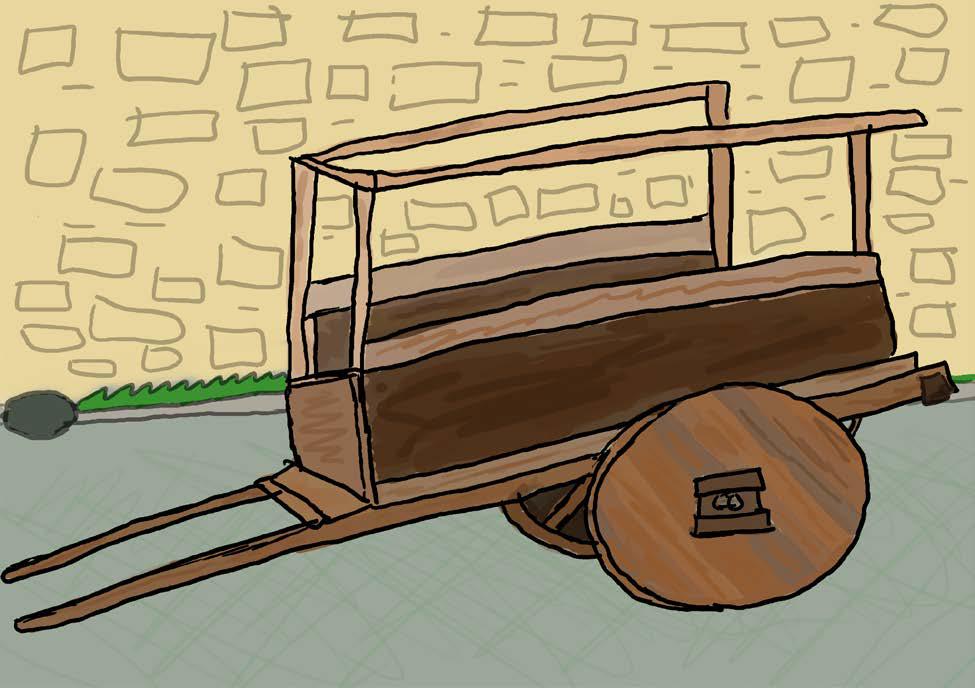The Wheel

People have always been wondering about ways to make land transportation easier. They thought about an object that would help to make transport on land smoother, faster and effortless. In around 3,500 BCE, the Sumerians invented the Potter’s wheel that was used to make pottery and found out that when a wheel is attached to a cart, transportation would be easier. As a result, they started to think about how a wheel could be attached to a cart. Because of that, one had an ingenious idea to attach a rod called an axle to both the wheel and the cart, so that when the person moves the cart, the axle will turn, causing the wheel to turn. Finally, these wheels are used for not only land transportation in cars, bicycles, motorbikes, etc. but also in industry, power generating and game shows as well.
A few months ago, I was sitting in the heart of a park. I watched the children on skateboards and strollers and bikes in the park, watched the cars that passed by and watched a person with a wheelbarrow full of manure. This truly is a vivid example of how wheels are used in everyday life. However, nobody really thinks about who invented the wheel, how the wheel spread throughout the world and how the wheel evolved from. Now, let’s think about it. How did the wheel come into existence?

It all started in the ancient Sumerian city of Uruk, around 3500 BCE, when there came an invention that was to change the world about 5 millennia later - the wheel. Alright, it was not used for transportation back then, but to make pottery. However, while the Sumerians struggled to find a way to invent a way that the wheel could be used for travel, European civilizations were already on wheels.
Evidence of wheeled vehicles in the period was found as far as Europe. In these vehicles, a rod called an axle was attached to the wheels so that the whole wheel could be turned when the axle is turned. About a millennium later, the wheel spread to Asia. Wheel tracks dating to 2000 BCE were found in the current-day Hunan province of China.
Around the 2nd millennium BCE, the wheel spread to Egypt and classical Greece. Around 2000 BCE, the Egyptians implemented the first spoked wheel on their chariots, and the Greeks introduced the cross-bar wheel. By the 1st millennium BCE, the wheel spread to the Celtic regions, where iron rims were introduced around the Celtic chariot wheels.
There were no further changes to the spoked wheel until 180 2 CE, when a patent for a wire-spoke which consisted of a wire secured at both ends of the wheel to the hub, was registered by G.F. Bauer. This evolved to the round tension spoke that we see on modern bicycles.
In 1845, the pneumatic tyre was patented by R.W Thompson and further improved in 1888 by John Dunlop, whose tyre replaced the hard rubber that was used by bicycles those days because of the smooth ride provided when Dunlop’s tyre was used.
André and Edouard Michelin thought of the intellectual idea to use rubber tyres for automobiles, which were used for Karl Benz’s 1885 Benz Patent Motorwagen. In 1910, carbon was added to the rubber by the B.F. Goodrich Company for longer life tyres. Then came the disc tyre, which was made for it to be lighter, resistant to damage and cheaply produced.
Other than for automobiles, there were other uses for the wheel. It could be used to generate electricity, like the water mill, or for industry, like the spinning wheel, or maybe even for a game show like the Wheel of Fortune, and all of this is possible because of the potter’s wheel invented in an ancient Mesopotamian civilisation around 5,50 0 years ago.
References
History of the Wheel - autoevolution • autoevolution.com
The Invention and Development of the Wheel • thoughtco.com
When was the wheel invented? | New Scientist • newscientist.com
Invention Of The Wheel | Facts About The Wheel | DK Find Out • dkfindout.com
A Salute to the Wheel | Science | Smithsonian Magazine • smithsonianmag.com
Author biography
Muan Mohamed Rasheed is a seventh-grader, writer and member of “theCircle by Ugail Foundation: Leaders of Tomorrow 2022” programme. He is also the owner and creator of Kiyavaa, a non-profit blog and application for courses for people around the world to learn Dhivehi – the intriguing Maldivian language (for more information, see divehi-kiyavaa.blogspot.com). Muan enjoys playing sports, line art and writing stories and poetry.

Cite this article as:
Muan Mohamed Rasheed, The Wheel, theCircle Composition, Volume 2, (2022). https://thecirclecomposition.org/the-wheel/
